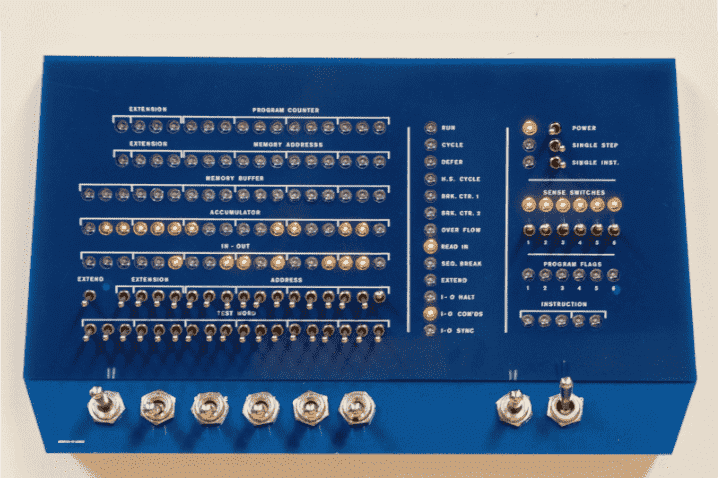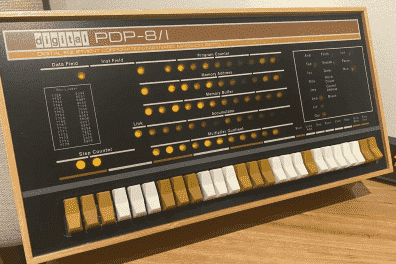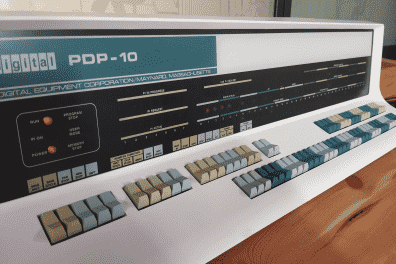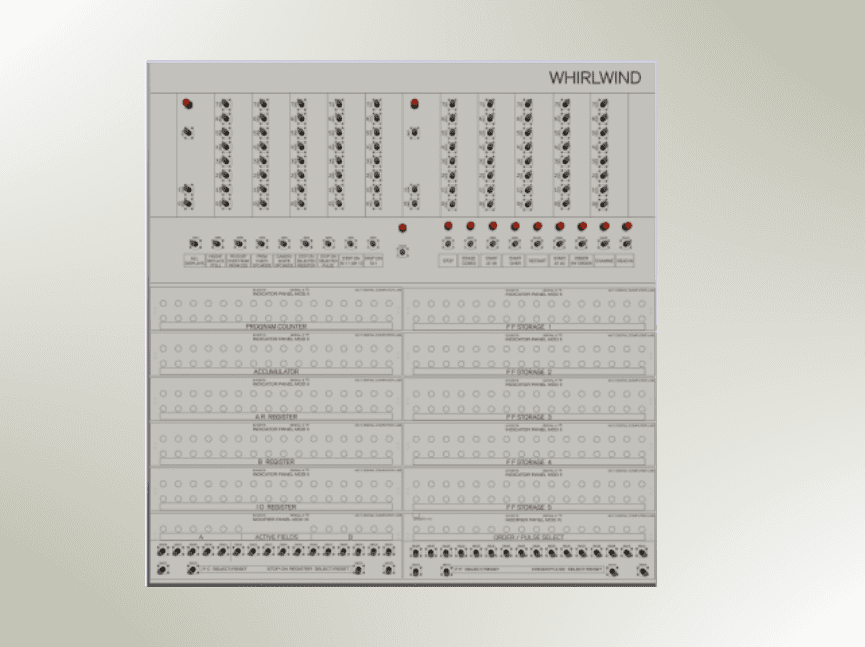These replicas cover the dawn of the computer age, up to 1959
Recreating the time of the pioneers, from Alan Turing to Stan Frankel. When it was not clear what a computer should be, or could be. Not even what the word should be. We start this series early, with the Enigma Machine, the breaking of its code involving the Father of Computer Theory and sparking off the first programmable computer.

Youtube: Animated Blinkenlights Collection

RetroBytes Youtube: DEC history
Our replicas and their place in the evolutionary tree of computing
The chart below is incomplete and oversimplified! It serves only to quickly put our replicas in their historical context. So. Whirlwind begat the PDP-1, which spawned three very
different computer types. The minimalist PDP-8 gave birth to embedded and personal computing leading up to MS-DOS.
The PDP-11 was where unix grew up, spawning workstations and later, anything to do with Linux, Macs, Android. But less well-known is that the developers of its RSX-11 OS
were called in by Microsoft to develop Windows NT, a complete break with the MS-DOS past of personal computers. You can see the roots in RSX-11.
Meanwhile, the glorious, super-powerful PDP-10 architecture went the way of the Dodo.
But that is only true for its type of hardware. Its legacy in computer culture (hacker culture, Open Source) and countless ground-breaking computer science concepts is huge, felt to this day.

So yes, the above is an oversimplification. But gives a quick picture of how our 5 replicas, combined, cover all the strands of computing before the microprocessor era.
Except, we give very little respect to the World of Mainframes here. Which is good, righting that wrong will give us plenty of future projects.
Our projects have been scattered all over the internet. This is the overview site with a single sub-page for each replica. The sub-pages then will bundle all the links to various project sites and further information, for those who want to dig deeper.
The scope of our work grew a lot over the years, from making a nice one-off replica to
the ambition of covering all the major steps in computer history. This will be our front page on the web.
Once the 'interactive computer' replica series above is completed, we'll be delving into to the other
strand of computer history: the World of IBM. So we think there will be more and more need to have an entry-level overview of it all.
We're not the only ones doing this. Scroll down further to see recommended replicas from other Makers that we own and enjoy























